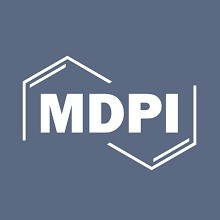
دانلود مقاله خلاقیت مثبت، خلاقیت اصولی است
چکیده
خلاقیت مثبت، خلاقیت اصولی است
رویکردی اصولی به خلاقیت
معرفی رویکرد عاملی به خلاقیت اصولی
مسئولیت شماره 1: شناسایی فرصت های خلاقانه
مسئولیت شماره 2: ارزیابی ریسک های خلاق
مسئولیت شماره 3: اقدام خلاقانه
مسئولیت شماره 4: ارزیابی اصولی نتایج
نمونه هایی از تجربیات آموزشی که خلاقیت اصولی را ترویج می کند
نتیجه گیری و مراحل بعدی
منابع
Abstract
Positive Creativity Is Principled Creativity
A Principled Approach to Creativity
Introducing an Agentic Approach to Principled Creativity
Responsibility #1: Identifying Creative Opportunities
Responsibility #2: Appraising Creative Risks
Responsibility #3: Taking Creative Action
Responsibility #4: Systematically Evaluating Outcomes
Examples of Educational Experiences That Promote Principled Creativity
Conclusions and Next Steps
References
چکیده
هدف از این مقاله معرفی چارچوبی اقداممحور با هدف تبیین و ترویج رویکرد اصولی خلاقیت در آموزش است. رویکرد اصولی به خلاقیت به طراحی و اجرای تلاشهای آموزشی خلاقانه مثبت اشاره دارد که توسط مجموعهای از تعهدات توافق شده با هدف کمک مثبت به یادگیری و زندگی دیگران هدایت میشوند. ما با بحث در مورد اینکه چگونه مفهوم ما از رویکرد اصولی خلاقیت با خلاقیت مثبت ارتباط دارد و چگونه این رویکرد میتواند تلاشهای آموزشی خلاقانه را هدایت کند، شروع میکنیم. به طور خاص، فرصتها و مسئولیتهای مرتبط با رویکرد اصولی به خلاقیت را مورد بحث قرار میدهیم، از جمله اینکه چگونه مربیان، دانشآموزان و محققان میتوانند فرصتهای خلاقانه، ریسکپذیری خلاق، اقدام خلاق، و نتایج مورد نظر و ناخواستهای را که از ارتقاء میآیند، دوباره مفهومسازی کنند. فکر و عمل خلاق در داخل و خارج از دیوار مدارس و کلاس های درس.
توجه! این متن ترجمه ماشینی بوده و توسط مترجمین ای ترجمه، ترجمه نشده است.
Abstract
The purpose of this article is to introduce an action-oriented framework aimed at clarifying and promoting a principled approach to creativity in education. A principled approach to creativity refers to the design and implementation of positive creative educational endeavors, which are guided by a set of agreed-upon commitments aimed at making a positive contribution to the learning and lives of others. We open by discussing how our conception of a principled approach to creativity connects to positive creativity and how this approach can guide creative educational endeavors. More specifically, we discuss the opportunities and responsibilities associated with a principled approach to creativity, including how educators, students, and researchers can re-conceptualize creative opportunities, creative risk-taking, creative action, and the intended and unintended outcomes that result from promoting creative thought and action in and beyond the walls of schools and classrooms.
Introduction
We assert that positive creativity is principled creativity. In making this claim, we must first outline what is meant by positive creativity. Our understanding of positive creativity aligns with the conception offered by Sternberg and Chowkase [1], which describes positive creativity as representing novel and meaningful actions and outcomes that, in some way, make the world a better place. We also agree with Sternberg and Chowkase [1] that this seemingly simple definition of positive creativity belies a deeper level of complexity, particularly when considered within an educational context.
Indeed, the complexity of the concept of positive creativity quickly emerges when we start to consider the design and enactment of positive creative educational experiences in and beyond the walls of schools and classrooms. How, for instance, might educators and young people identify the kinds of creative educational opportunities that are worth pursuing? What kinds of risks are associated with such endeavors, and how can educators and young people appraise those risks? What guides educators’ and young peoples’ actions when engaging in creative educational opportunities? How might the outcomes, both intended and unintended, of those creative actions be anticipated, evaluated, and addressed? What sociocultural value systems are used to weigh the potential positive and negative outcomes of certain creative endeavors?
Conclusions and Next Steps
In this article, we have discussed how positive creativity in education requires taking a principled approach to identifying creative opportunities, appraising risks, taking action, and evaluating outcomes. Although taking a principled approach to creative endeavors can, at first blush, seem quite ambitious and even overwhelming, we hope that we have demonstrated that even small-scale projects can make meaningful contributions to the learning and lives of young people. As teachers and students develop their confidence working through small-scale projects, they can begin to realize how they can further extend their efforts by partnering with outside communities and experts to tackle increasingly complex challenges now and into the future. We also hope that educators can see how principled creative projects complement and extend academic learning by providing students with an opportunity to make positive contributions to their schools, communities, and beyond.
